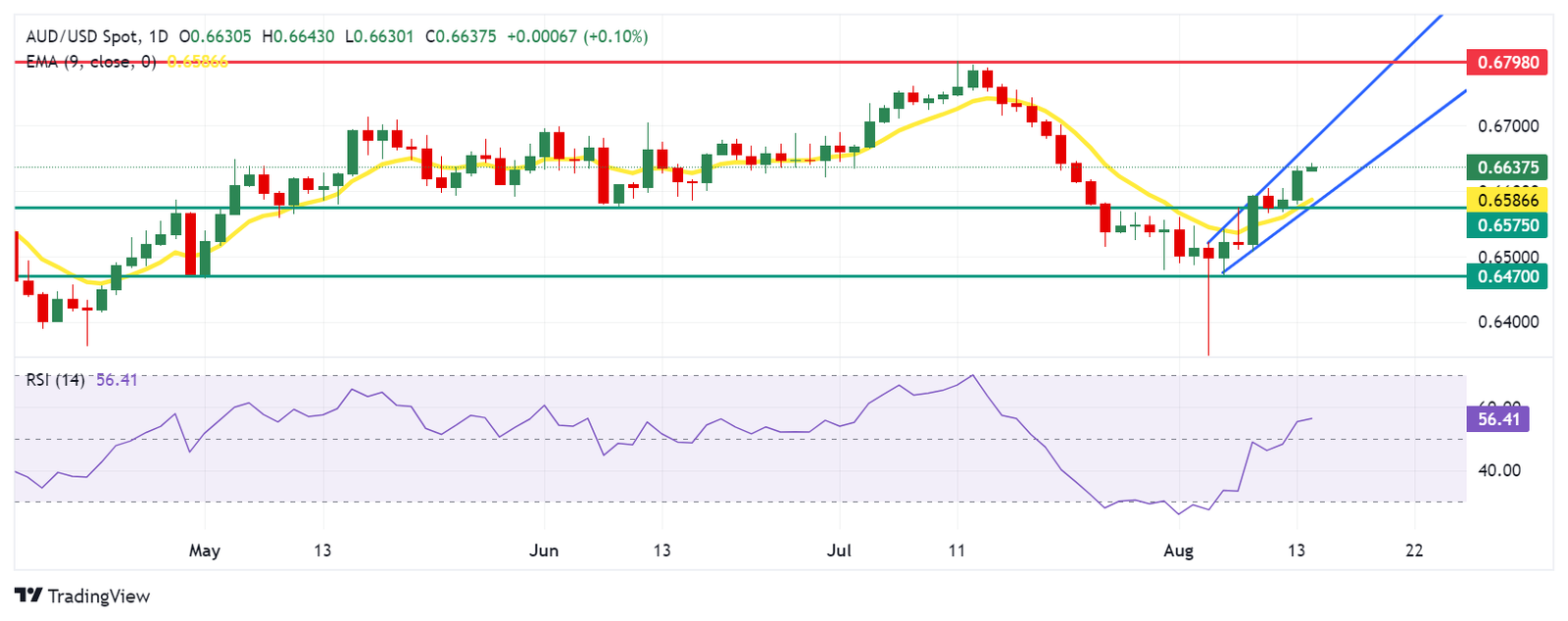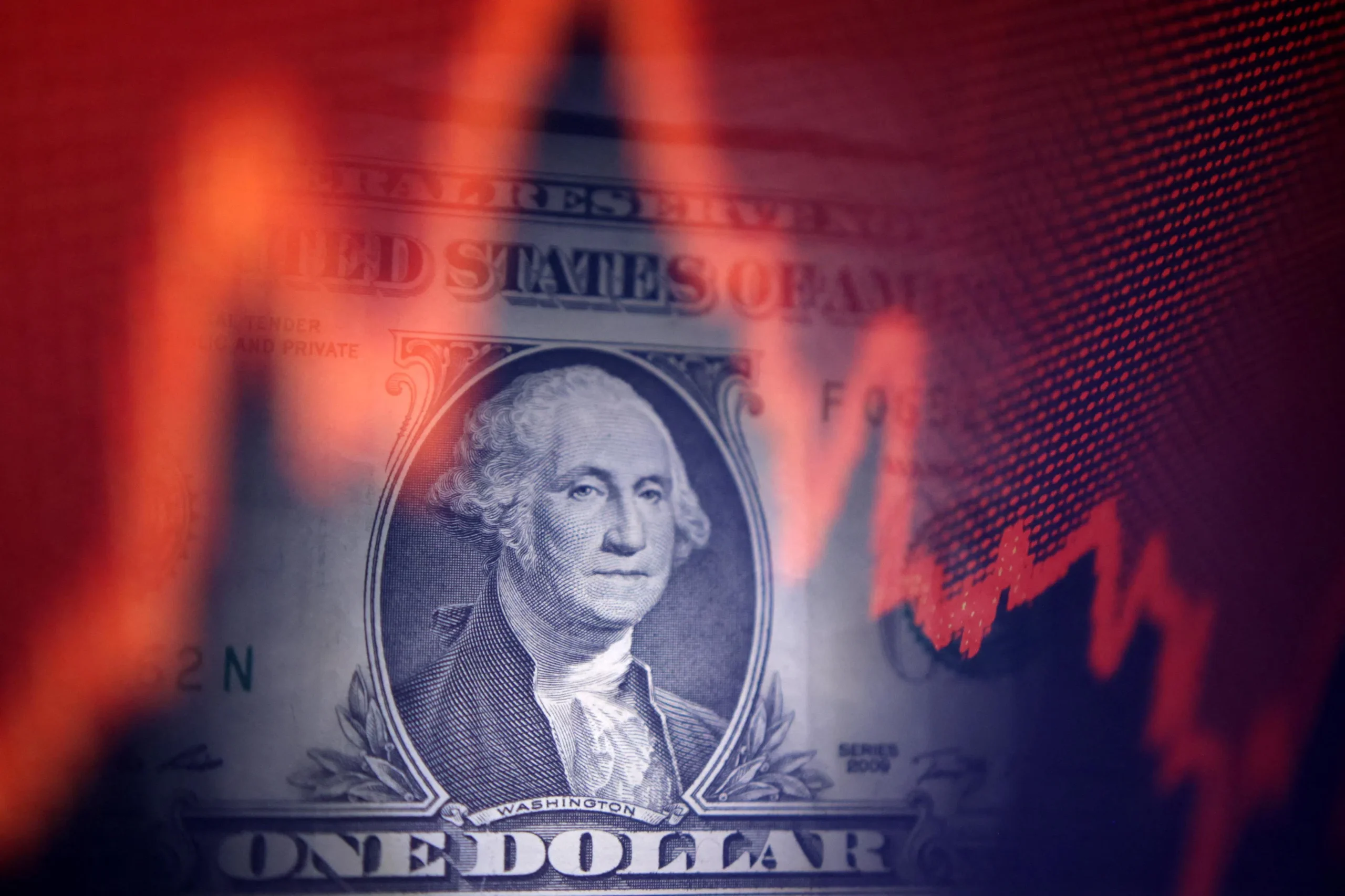- The Australian Dollar depreciates following an unexpected 25 basis points rate cut by the RBNZ on Wednesday.
- The Aussie Dollar may face challenges due to safe-haven flows amid rising geopolitical tensions in the Middle East.
- The US Dollar experienced losses following downbeat Producer Price Index data on Tuesday.
The Australian Dollar (AUD) loses ground against the US Dollar (USD) following the surprise rate-cut decision by the Reserve Bank of New Zealand (RBNZ) on Wednesday. The RBNZ decided to cut its Official Cash Rate (OCR) by 25 basis points to 5.25% from 5.50%. Australia and New Zealand have strong economic links, including trade and investment. Economic developments in one country can impact the other, influencing their currencies.
The AUD received support as recent data shows that Australian wage growth remained elevated in the second quarter, prompting the Reserve Bank of Australia (RBA) to adopt a hawkish stance regarding its policy outlook. The RBA maintained the cash rate at last week’s meeting to ensure inflation returns to its 2-3% target.
RBA Governor Michele Bullock also dismissed the possibility of rate cuts for the next six months, emphasizing that the Australian central bank remains cautious about inflation risks and is prepared to raise rates again if necessary. Traders are now awaiting the release of Consumer Inflation Expectations and Employment data from Australia on Thursday.
The AUD/USD pair received support as the US Dollar lost ground following lower-than-expected Producer Price Index (PPI) data from the United States (US) released on Tuesday. Investors will likely observe the US CPI inflation report on Wednesday, which could offer some hints about the Federal Reserve’s (Fed) interest rate cut path.
Daily Digest Market Movers: Australian Dollar could appreciate due to hawkish RBA
- On Tuesday, Atlanta Fed President Raphael Bostic stated that recent economic data has increased his confidence that the Fed can achieve its 2% inflation target. However, Bostic indicated that additional evidence is required before he would support a reduction in interest rates, according to Reuters.
- The US Core Producer Price Index (PPI) rose by 2.4% year-on-year in July, against the previous reading of 3.0%. The index fell short of an estimate of 2.7%. The Core PPI remained unchanged.
- The US PPI rose 2.2% YoY in July from 2.7% in June, falling short of the market expectation of 2.3%. Meanwhile, the PPI increased 0.1% MoM after rising by 0.2% in June.
- Australia’s Westpac Consumer Confidence rose by 2.8% in August, swinging from a 1.1% fall in July. Meanwhile, the Wage Price Index remained steady with a 0.8% rise in the second quarter, slightly below the market expectation of a 0.9% increase.
- On Monday, Reserve Bank of Australia (RBA) Deputy Governor Andrew Hauser attributed persistent inflation to weaker supply and a tight labor market. Hauser also noted that economic forecasts are surrounded by significant uncertainty.
- The upside of the risk-sensitive AUD could be restrained due to safe-haven flows amid increased geopolitical tensions in the Middle East. On Sunday, Defense Minister Yoav Gallant informed US Defense Secretary Lloyd Austin that Iran’s military activities indicate preparations for a significant strike on Israel, as reported by Axios writer Barak Ravid.
- On Sunday, Federal Reserve Governor Michelle Bowman stated that she continues to see upside risks for inflation and ongoing strength in the labor market. This suggests that the Fed may not be prepared to cut rates at their next meeting in September, according to Bloomberg.
- Last week, Westpac updated its RBA forecast, now predicting the first rate cut will occur in February 2025, a shift from the previously anticipated November 2024. They also revised their terminal rate forecast to 3.35%, up from the previous 3.10%. The RBA is now viewed as more cautious, needing stronger evidence before considering rate cuts.
Technical Analysis: Australian Dollar hovers near 0.6650
The Australian Dollar trades around 0.6640 on Wednesday. The daily chart analysis indicates that the AUD/USD pair moves upward within an ascending channel, signaling a strengthening bullish bias. Additionally, the 14-day Relative Strength Index (RSI) has surpassed the 50 level, confirming the bullish momentum.
On the upside, the AUD/USD pair might test the upper boundary of the ascending channel at the 0.6675 level. A breakout above this level could push the pair toward its six-month high of 0.6798, reached on July 11.
In terms of support, the AUD/USD pair might test the nine-day Exponential Moving Average (EMA) at 0.6587, followed by the lower boundary of the ascending channel and the throwback level at 0.6575. A decline below the latter could strengthen a bearish outlook, potentially pushing the pair toward the throwback level at 0.6470.
AUD/USD: Daily Chart
Australian Dollar PRICE Today
The table below shows the percentage change of Australian Dollar (AUD) against listed major currencies today. Australian Dollar was the weakest against the Swiss Franc.
| USD | EUR | GBP | JPY | CAD | AUD | NZD | CHF | |
|---|---|---|---|---|---|---|---|---|
| USD | 0.02% | 0.04% | 0.09% | 0.10% | 0.02% | 1.15% | -0.03% | |
| EUR | -0.02% | 0.00% | 0.06% | 0.06% | 0.05% | 1.10% | -0.05% | |
| GBP | -0.04% | -0.01% | 0.08% | 0.07% | 0.04% | 1.12% | -0.03% | |
| JPY | -0.09% | -0.06% | -0.08% | 0.01% | -0.04% | 1.03% | -0.07% | |
| CAD | -0.10% | -0.06% | -0.07% | -0.01% | -0.05% | 1.04% | -0.09% | |
| AUD | -0.02% | -0.05% | -0.04% | 0.04% | 0.05% | 1.05% | -0.08% | |
| NZD | -1.15% | -1.10% | -1.12% | -1.03% | -1.04% | -1.05% | -1.11% | |
| CHF | 0.03% | 0.05% | 0.03% | 0.07% | 0.09% | 0.08% | 1.11% |
The heat map shows percentage changes of major currencies against each other. The base currency is picked from the left column, while the quote currency is picked from the top row. For example, if you pick the Australian Dollar from the left column and move along the horizontal line to the US Dollar, the percentage change displayed in the box will represent AUD (base)/USD (quote).
Australian Dollar FAQs
One of the most significant factors for the Australian Dollar (AUD) is the level of interest rates set by the Reserve Bank of Australia (RBA). Because Australia is a resource-rich country another key driver is the price of its biggest export, Iron Ore. The health of the Chinese economy, its largest trading partner, is a factor, as well as inflation in Australia, its growth rate and Trade Balance. Market sentiment – whether investors are taking on more risky assets (risk-on) or seeking safe-havens (risk-off) – is also a factor, with risk-on positive for AUD.
The Reserve Bank of Australia (RBA) influences the Australian Dollar (AUD) by setting the level of interest rates that Australian banks can lend to each other. This influences the level of interest rates in the economy as a whole. The main goal of the RBA is to maintain a stable inflation rate of 2-3% by adjusting interest rates up or down. Relatively high interest rates compared to other major central banks support the AUD, and the opposite for relatively low. The RBA can also use quantitative easing and tightening to influence credit conditions, with the former AUD-negative and the latter AUD-positive.
China is Australia’s largest trading partner so the health of the Chinese economy is a major influence on the value of the Australian Dollar (AUD). When the Chinese economy is doing well it purchases more raw materials, goods and services from Australia, lifting demand for the AUD, and pushing up its value. The opposite is the case when the Chinese economy is not growing as fast as expected. Positive or negative surprises in Chinese growth data, therefore, often have a direct impact on the Australian Dollar and its pairs.
Iron Ore is Australia’s largest export, accounting for $118 billion a year according to data from 2021, with China as its primary destination. The price of Iron Ore, therefore, can be a driver of the Australian Dollar. Generally, if the price of Iron Ore rises, AUD also goes up, as aggregate demand for the currency increases. The opposite is the case if the price of Iron Ore falls. Higher Iron Ore prices also tend to result in a greater likelihood of a positive Trade Balance for Australia, which is also positive of the AUD.
The Trade Balance, which is the difference between what a country earns from its exports versus what it pays for its imports, is another factor that can influence the value of the Australian Dollar. If Australia produces highly sought after exports, then its currency will gain in value purely from the surplus demand created from foreign buyers seeking to purchase its exports versus what it spends to purchase imports. Therefore, a positive net Trade Balance strengthens the AUD, with the opposite effect if the Trade Balance is negative.







